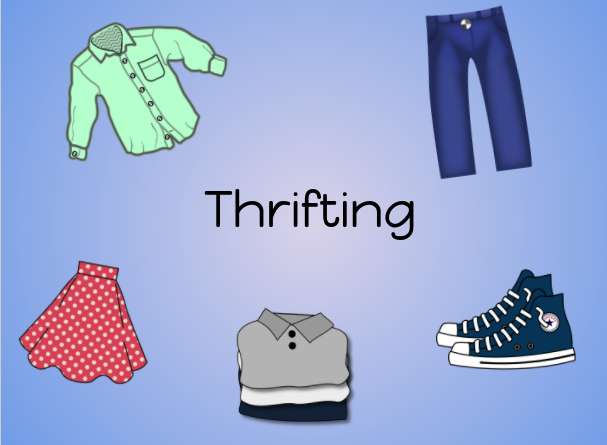Thrifting, One of the Major Ways to Combat Fast Fashion
Thrifting is a method of shopping for secondhand items at places such as thrift stores, charity shops, or flea markets. It is typically done with the intent of getting unique pieces for a low price.
April 2, 2021
Thrifting is becoming more of a hobby rather than just a different method of shopping. Its appeal comes not only from being cheap and ethical, but also from the excitement of searching and finding a new piece that you can’t get anywhere else. But with the rise of popularity comes a new set of problems and controversy over thrifting.
Many believe that people who can afford to shop for new items and clothing should not thrift, and should leave the things in thrift stores for lower income people to buy. Prices in thrift stores have increased over 15% on average within the last three years. This price heightening affects marginalized communities, making it harder to obtain basic necessities like clothing.
Along with the prices going up, another problem that has begun are resellers. People will buy items in thrift stores, label them as vintage (sometimes without the item even actually representing the term), and resell them on popular apps such as Depop for a much higher price than what they were bought for.
They are taking secondhand items and up charging the price for something many people who thrift could never afford.
While resellers and price increases of thrifting are problems, thrifting should still continue to be used widely.
With the rise of people thrift shopping also comes an increase of people donating to thrift stores. This will allow for more products that can be sold to those who need it.
Lots of people who thrift can afford to buy new clothing, but the majority of them can’t afford to buy actual sustainable clothing. Because of that, the clothing that they end up buying is from fast fashion brands. Fast fashion is new, often trendy clothing that is mass manufactured at a low price.
Because fast fashion is cheaply made, the quality is often poor and people end up throwing it away or getting rid of it quickly. The average American consumer throws away around 80 pounds of clothing per year. Along with the clothing thrown away by individuals, some companies also throw away their unsold products. In the United States, around 85% of thrown away clothing ends up in a landfill or incinerated.
This is very bad for the environment because clothes do not biodegrade easily, and they can remain in the landfill for many years after arriving there. As well as that, the clothes being burned can result in more carbon dioxide being released into the atmosphere.
The clothing industry accounts for 10% of all greenhouse gas emissions and 20% of global waste water.
Along with the harm being done to our environment, fast fashion is also unethical towards its workers. Fast fashion companies often get their products made from workers overseas, in countries such as China or Vietnam. The workers are often young women who are exploited in order for the companies to make a higher profit. They are very underpaid and are subjected to dangerous and unsafe working conditions.
Resellers are a large problem in the secondhand shopping community, and more people should speak out against it. Prices of thrift shopping should not be going up, but that is something that is inevitable as things begin to be purchased more often within companies in our society. The more people there are that thrift, the less people there will be that buy fast fashion. And as less people buy fast fashion, in turn less clothing will be produced. This will greatly help the environment and many fast fashion workers. Thrifting is sustainable and ethical, and hopefully its popularity continues to grow over the years.



